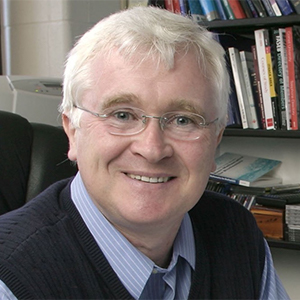Enzymes show off new moves
Enzymes are responsible for the chemical reactions that enable all forms of life. Whether it’s the archaea living in hot springs, the bacteria deep in our soil, the plants harnessing energy from the sun or all animals, including us humans, we are all united in our reliance on enzymes.
Understanding enzymatic chemistry enables us to tackle critical health and environmental problems, such as designing new therapeutics for diseases or using unique enzymatic capabilities for bioremediation. However, we have only skimmed the surface of learning the full scope of chemical reactions that are enzymatically catalyzed, the mysterious and intricate mechanisms that can be performed, and the dynamic motions enzymes undergo to accomplish their chemical tasks.
The presentations in this session will cover many exciting developments in enzymology, including recently discovered enzymatic functions, evidence for trapping long-anticipated enzymatic intermediates, insight into how various cofactors can enable unique reactions, and cutting-edge experimental approaches enabling us to understand better how enzymes dynamically function. There’s still a whole lot to learn about how enzymes get their jobs done.
Keywords: enzymes, enzyme mechanisms, structural biology, biochemistry, radical SAM enzymes, metalloenzymes, natural product biosynthesis
Who should attend: all who are fascinated by how enzymes can use some newly discovered tricks, handy cofactors and dynamic movements to carry out their chemistry
Theme song: “This is How We Do It” by Montell Jordan
This session is powered proteins, cofactors and coffee.
Talks
- Repairing enzymes using spare parts — Cathy Drennan, Howard Hughes Medical Institute and Massachusetts Institute of Technology
- Machinery in motion: New insights into mitochondrial proteostasis — Gabriel Lander, Scripps Research
- Structural biology of natural product biosynthetic enzymes — Janet Smith, University of Michigan
- An aerobic strategy for C–H bond functionalization — Jennifer Bridwell–Rabb, University of Michigan
- Riboflavin catabolism: The destruction of an icon — Tadhg Begley, Texas A&M University
- Correlated motions in enzymes — Nozomi Ando, Cornell University
- Nickel pincer nucleotide: Biosynthesis and function — Robert Hausinger, Michigan State University
- Bacterial biosynthesis of natural products —Katherine Ryan, University of British Columbia
- Radical SAMs and the vast unexplored chemistry of RiPP natural products —Douglas Alan Mitchell, University of Illinois Urbana–Champaign
- The biosynthesis of lipoic acid: A saga of death, destruction and rebirth — Squire Booker, Penn State University
- Unraveling the secrets of radical SAM mechanisms — Joan Broderick, Montana State University
- How do aerobic organisms solve the oxygen sensitivity problem of [4Fe–4S] in radical SAM enzymes? — Hening Lin, Howard Hughes Medical Institute and Cornell University
Learn more
Check out all ten thematic symposia planned for the 2022 ASBMB annual meeting:
Enjoy reading ASBMB Today?
Become a member to receive the print edition four times a year and the digital edition monthly.
Learn moreFeatured jobs
from the ASBMB career center
Get the latest from ASBMB Today
Enter your email address, and we’ll send you a weekly email with recent articles, interviews and more.
Latest in Science
Science highlights or most popular articles

Bacteriophage protein could make queso fresco safer
Researchers characterized the structure and function of PlyP100, a bacteriophage protein that shows promise as a food-safe antimicrobial for preventing Listeria monocytogenes growth in fresh cheeses.

Building the blueprint to block HIV
Wesley Sundquist will present his work on the HIV capsid and revolutionary drug, Lenacapavir, at the ASBMB Annual Meeting, March 7–10, in Maryland.

Gut microbes hijack cancer pathway in high-fat diets
Researchers at the Feinstein Institutes for Medical Research found that a high-fat diet increases ammonia-producing bacteria in the gut microbiome of mice, which in turn disrupts TGF-β signaling and promotes colorectal cancer.

Mapping fentanyl’s cellular footprint
Using a new imaging method, researchers at State University of New York at Buffalo traced fentanyl’s effects inside brain immune cells, revealing how the drug alters lipid droplets, pointing to new paths for addiction diagnostics.

Designing life’s building blocks with AI
Tanja Kortemme, a professor at the University of California, San Francisco, will discuss her research using computational biology to engineer proteins at the 2026 ASBMB Annual Meeting.

Cholesterol as a novel biomarker for Fragile X syndrome
Researchers in Quebec identified lower levels of a brain cholesterol metabolite, 24-hydroxycholesterol, in patients with fragile X syndrome, a finding that could provide a simple blood-based biomarker for understanding and managing the condition.


